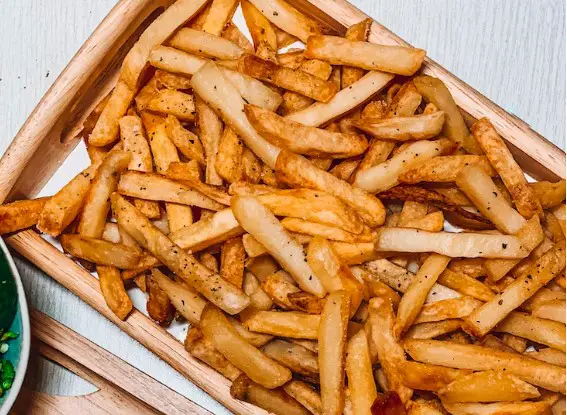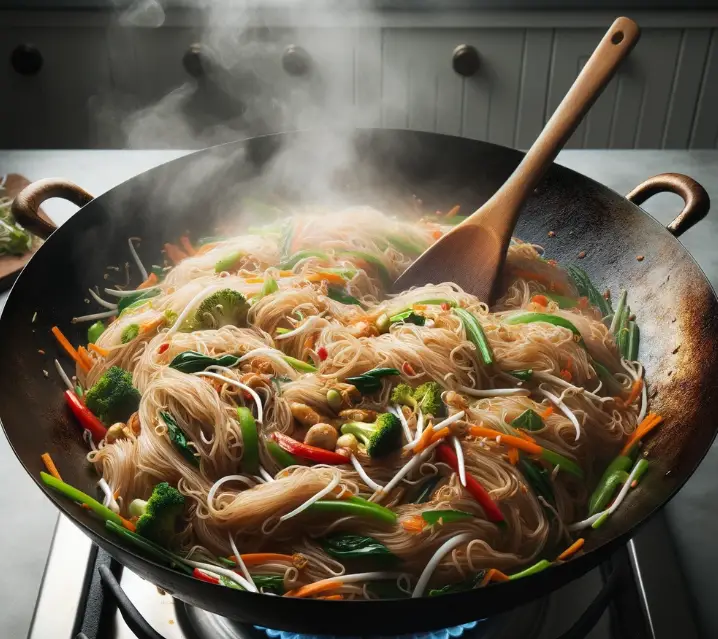I love fries. I mean who doesn’t? Crunchy on the outside, fluffy on the inside. However sometimes when I made them, they are just soaked with oil.
Through multiple attempts, I found out that the main reason why my fries are so oily is because the heat wasn’t hot enough. You can heat up your oil to the correct temperature and it is still not enough. Let’s delve into it.

Reasons for Oily Fries:
- Overcrowding The Pot
One of the primary culprits behind excessively oily fries is overcrowding. Much like a crowded room can stifle airflow, too many fries in the pot impede proper oil circulation. This leads to a drop in oil temperature, causing the fries to cook longer and absorb more oil, resulting in a greasy exterior. - Temperature Control
Frying is a delicate dance of temperature control. The initial fry at 350°F and subsequent increase to 375°F seemed like a well-planned strategy. However, failing to maintain consistent oil temperature can disrupt the frying process. Fluctuating temperatures contribute to extended cooking times and increased oil absorption, ultimately resulting in an undesirable level of greasiness. - Insufficient Drying
Moisture is the nemesis of crispiness. While the ice bath is an excellent method for removing excess starch, not ensuring the fries are thoroughly dried before frying can lead to oil sogginess. Water on the surface of the fries can cause the oil to bubble and splatter, leading to uneven cooking and an oily outcome.
How to Prevent Oily Fries:
- Mindful Batching
Avoid the temptation to overcrowd the fryer basket. Give the fries ample space to ensure proper oil circulation and even cooking. Opt for smaller batches, allowing the oil to maintain its temperature and preventing excessive oil absorption. - Precise Temperature Management
Temperature control is key to achieving the perfect fry. Invest in a reliable thermometer to monitor oil temperature accurately. Maintain a consistent frying temperature throughout the cooking process to achieve a balanced texture and prevent oiliness. - Thorough Drying
After the ice bath, pat the fries dry using paper towels or a clean kitchen towel. Removing surface moisture before frying minimizes the risk of oil splattering and enhances the overall crispiness of the fries. - Intermediate Cooling
Allow the fries to cool to room temperature or chill them slightly before the second fry. This step helps set the starches on the surface, resulting in a crisper texture and reduced oil absorption.
Tips for Achieving Crispy Fries:
- Blanching Technique
Consider a blanching step before the final fry. Parboil the fries at a lower temperature, around 300°F, until they are just softened. Then, freeze or chill them before the final fry at a higher temperature for ultimate crispiness. - Use the Right Oil
Opt for oils with high smoke points, such as peanut oil or sunflower oil. These oils can withstand higher temperatures without breaking down, leading to less oil absorption and a cleaner taste. - Rest and Drain
Allow the freshly fried fries to rest briefly on a wire rack or paper towels. This step allows excess oil to drain away, preventing it from soaking back into the fries. - Experiment with Coatings
Consider dusting the fries with a light coating of cornstarch or rice flour before frying. This can create an extra layer of crispiness and act as a barrier against excess oil absorption.
Mastering the art of homemade fries requires a delicate balance of technique and science. By understanding the factors that contribute to excessive oiliness and implementing strategies to prevent it, you can elevate your fry game to new heights. Mindful batch sizes, precise temperature management, and thorough drying are just a few steps that can make a world of difference in achieving the perfect, non-greasy, and delightfully crispy homemade fries.


